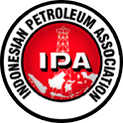Publications
Banyu Urip Reservoir Rock Types And Geologic Models For Different Stages Of Asset Life, Cepu Block, Indonesia
Proceedings Title : Proc. Indon. Petrol. Assoc., 37th Ann. Conv., 2013
Geologic models provide the best tool to accurately estimate field volumes, to visualize the geology of the field and its flow units, and to provide input to dynamic simulation. However, using the same data, geologic models can use a number of different workflows that all produce the desired carbonate depositional and diagenetic processes and ultimately flow units. For Banyu Urip Field in East Java, Indonesia, Mobil Cepu Ltd has studied different methods to produce a model from a very simple approach to more complicated approaches. Construction of the Banyu Urip models takes into account the unique technical challenges of characterizing diagenetically altered, carbonate build-ups, as well as what questions need to be addressed by the business unit. Reservoir quality zones (RQZs) are the basic building blocks of models in Cepu Block and are a combination of deposition and diagenesis and are defined from well log data and position within the carbonate platform. For this case study of the Banyu Urip Field, RQZs include the Platform Interior, Lower Platform Interior, Tight Rind, and Drowning Phase. In the Banyu Urip reservoir model, the RQZs are created deterministically, using surfaces and polygons. Using a simple, statistical modeling workflow, porosity is derived from well log histograms and distributed probabalistically within the RQZs. A more detailed modeling approach distributes reservoir rock types (RRTs) within the RQZs. These RRTs are based on pore-scale observations, core analysis, and well log character. When using this methodology in the Banyu Urip reservoir model, RRTs are populated within RQ zones, using variograms determined by vertical and lateral trends. This modeling methodology has been tested, but at this stage in the field life yields similar results to the simpler modeling method and would
Log In as an IPA Member to Download
Publication for Free.
or
Purchase from AAPG Datapages.
